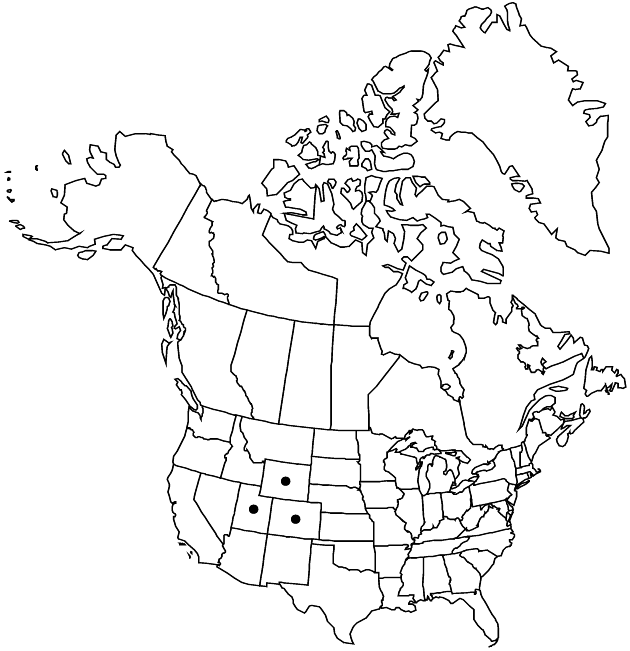Cirsium clavatum
Beih. Bot. Centralbl. 35(2): 310. 1917.
Biennials or monocarpic or polycarpic perennials, 20–100 cm; taproots sometimes with branched caudices. Stems 1–several, erect or ascending, glabrous or thinly arachnoid-tomentose; branches 0–10+, slender, usually arising in distal 1/2, ascending. Leaves: blades oblong to oblanceolate or elliptic, 5–40 × 3–11 cm, unlobed and merely spinulose-dentate or more commonly regularly deeply pinnatifid, lobes well separated to crowded, linear to triangular-ovate, ascending-spreading to retrorse, merely spinulose to coarsely dentate or proximally few-lobed, main spines 2–5 (–7) mm, slender, abaxial faces green to gray, glabrous or thinly to densely arachnoid-tomentose, sometimes glabrate, often villous with septate trichomes along veins, adaxial green, glabrous; basal usually present at flowering, sessile or petiolate; principal cauline well distributed, proximal usually winged-petiolate, mid sessile, decurrent as spiny wings 1–3 cm; distal cauline ± reduced. Heads few–many, borne singly or clustered in corymbiform, paniculiform, or racemiform arrays at tips of main-stem and branches, sometimes also in distal axils not closely subtended by clustered leafy bracts. Peduncles 0–30 cm. Involucres ovoid to campanulate, 1.5–3 × 1–3 cm, glabrous to thinly arachnoid-tomentose and/or villous-ciliate, with long septate trichomes connecting adjacent phyllaries. Phyllaries in 5–6 series, imbricate or subequal, outer green or with maroon to dark-brown subapical patch or appendage, linear to ovate, abaxial faces with narrow glutinous ridge that may concealed by trichomes; outer and middle with bases appressed, apical appendages erect or ascending, ovate to linear-lanceolate or acicular, entire or spinulose to broadly expanded, scarious, and erose-dentate, apical appendages, spines erect or ascending, 1–5 mm, ± flattened; apices of inner sometimes flexuous or reflexed, narrow, flat, entire or ± expanded, scarious and lacerate-dentate. Corollas creamy white to pale pinkish, 16–20 mm, tubes 6.5–9 mm, throats 4–7.5 mm, lobes 4–6 mm; style tips 3.5–5 mm. Cypselae tan to dark-brown, 5–6 mm, apical collars not or scarcely differentiated; pappi 14–16 mm.
Distribution

Colo., Utah, Wyo., Central Rocky Mountains
Discussion
Varieties 3 (3 in the flora).
Cirsium clavatum is a polymorphic and variable species.
Selected References
None.
Lower Taxa
Key
| 1 | Involucres densely villous or tomentose with long, septate trichomes connecting adjacent phyllaries | Cirsium clavatum var. osterhoutii |
| 1 | Involucres glabrous or thinly arachnoid-tomentose with fine, non-septate trichomes | > 2 |
| 2 | Some or all of the phyllaries usually with dilated, scarious, erose to fringed appendages; mostly Colorado and Wyoming | Cirsium clavatum var. americanum |
| 2 | Phyllaries usually entire; w Colorado and Utah | Cirsium clavatum var. clavatum |
"fine" is not a number.